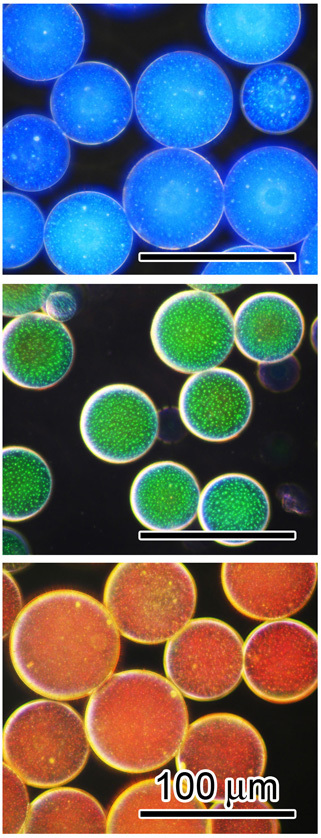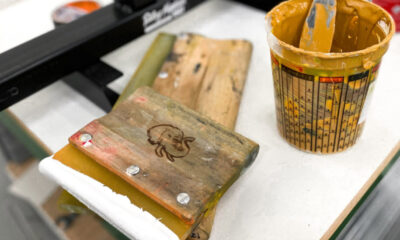Environmentally friendly ink materials for color printing, as well as rewritable and reusable signage, posters, papers, and labels are all potential applications for a new material developed by a research team led by a chemist at the University of California, Riverside. The group has fabricated microscopic polymer beads that change color instantly and reversibly when external magnetic fields acting upon the microspheres change orientation.
According to UC Riverside, the beads—technically referred to as magnetochromatic microspheres—have excellent structural stability and are highly compatible with water, alcohol, hexane, and polymer solutions, allowing them to retain magnetically tunable colors in a variety of chemical environments.
“Unlike many conventional approaches, the instantaneous color change occurs with no change in the structure or intrinsic properties of the microspheres themselves,” explains Yadong Yin, an assistant professor of chemistry, who led the study that brought together chemists at UC Riverside and engineers at Seoul National University, South Korea. “What changes instead are the magnetic fields acting externally on the orientation of these microspheres, these photonic crystals. Our work provides a new mechanism for inducing color change in materials. Now, for the first time, stable photonic materials with tunable colors can be fabricated on a large scale.”
Seoul National University’s Sunghoon Kwon, a specialist in biophotonics and nanoengineering, whose lab collaborated with Yin's lab on the research, says the new technology has great potential for a wide range of photonic applications because the on/off switching of the diffraction color by the rotating photonic sphere is fast, which greatly simplifies the pixel structures. Therefore, he notes, the new technology is suitable for oversized displays, such as active, rewritable signage.
Lab experiments involved researchers embedding arrays of spatially ordered magnetic iron oxide nanostructures within each polymer microsphere, enabling its colors to be switched on and off by changing the microsphere's orientation – or more precisely the orientation of the array. Furthermore, the new system has the advantage of producing bistable color states, required for making rewritable displays.

 Case Studies2 months ago
Case Studies2 months ago
 Art, Ad, or Alchemy2 months ago
Art, Ad, or Alchemy2 months ago
 Andy MacDougall2 months ago
Andy MacDougall2 months ago
 Columns3 weeks ago
Columns3 weeks ago
 Editor's Note2 weeks ago
Editor's Note2 weeks ago
 Marshall Atkinson2 weeks ago
Marshall Atkinson2 weeks ago
 Thomas Trimingham2 months ago
Thomas Trimingham2 months ago
 News & Trends2 months ago
News & Trends2 months ago








